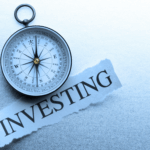Tesla (NASDAQ:TSLA) has witnessed a significant boost in its stock performance recently, as company CEO Elon Musk is now devoting attention back to the business after exiting his governmental role. Musk’s involvement in the Department of Government Efficiency (DOGE) had overshadowed Tesla’s growth, leading to investor unease. As Musk resumes concentrating on Tesla alongside his diversification into other ventures, the market is watching closely for the company’s next strategic moves. This pivot arrives at a pivotal moment for Tesla, feeding renewed optimism among its supporters and stakeholders.
Earlier, Musk’s participation in the Trump Administration through DOGE was a source of intense debate and distraction from Tesla’s core activities. During his leadership at DOGE, Tesla shares experienced a dip, reaching a low of around $222 in March. This period is marked by various hindrances, including declining share prices, mainly due to Musk’s involvement in the political sphere that affected the public’s perception and investor confidence. The shares have now rebounded, yet the year-to-date performance remains suboptimal. This reflects the critical impact of management focus on investor sentiments.
Musk’s Recommitment to Tesla: What Changes?
The shift of focus is expected to bring advantageous changes for Tesla as Musk has indicated plans to prioritize essential projects. He aims to channel significant efforts toward X, xAI, and the upcoming Starship launch besides Tesla’s ongoing developments. This recommitment is crucial, given the recent challenges and competition within the rapidly evolving technology landscape. The factors contributing to this renewed focus suggest strategic opportunities that Tesla aims to leverage in reclaiming its market position.
Could Tesla’s Robotaxi Initiative Stay on Track?
Tesla’s robotaxi project has sparked considerable attention as it prepares for an official launch this June. With testing already underway in Austin, the initiative promises to bolster Tesla’s front in the autonomous vehicle sector. Competition from entities such as Waymo and Zoox intensifies the need for Tesla to deliver robust and innovative solutions. While considerable excitement surrounds these developments, experts like Ray Wang urge caution due to the inherent unpredictability in execution timelines common in technologically advanced undertakings.
With Musk back at Tesla’s helm, a new chapter unfolds as the company embarks on deploying autonomous vehicles in select areas. Beyond technical advancements, Tesla’s ability to scale these initiatives effectively remains a critical component of sustaining its edge over traditional and emerging competitors. Shareholder and market analyst assessments show that while the commencement of these initiatives is promising, execution reliability will dictate their success.
Musk’s engagement in the US government, while controversial, generated mixed reflections on his dual leadership roles. While securing operational savings during his tenure has been publicly commended by figures like President Trump, critics spotlight how this could potentially delay his contributions to Tesla. Moving forward, Musk’s multi-faceted interests necessitate a balanced approach to ensure distinct roles do not impede one another’s objectives. Historically, Musk’s strategic decisions have significantly impacted Tesla’s trajectory, sway market beliefs, and require vigilant navigation to align each with overarching ambitions.
Continuing Tesla’s journey post-Musk’s governmental departure introduces both anticipated challenges and opportunities. Musk’s strategic redirection invites speculation on potential future milestones which could invigorate Tesla’s innovative power. Insights from historical performance and context-rich developments help illuminate possible paths for Tesla’s steady pace into future technological territory. Investors and analysts will need to monitor Tesla’s balancing of innovation with pragmatic execution.










